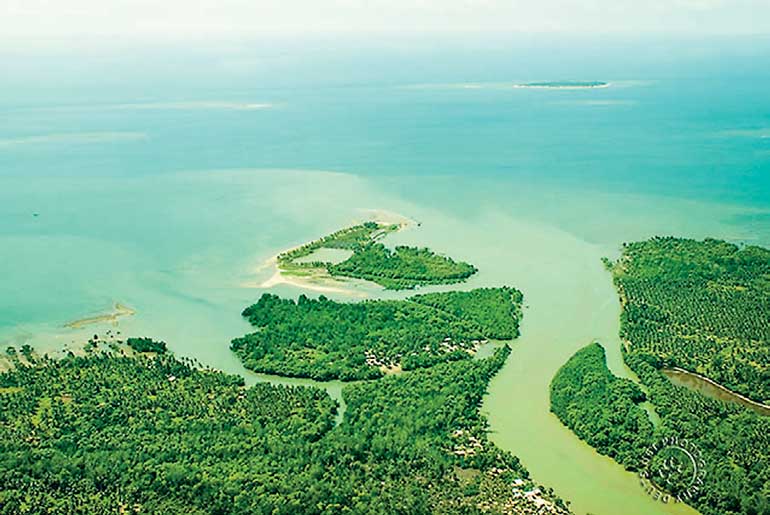Monday Dec 23, 2024
Monday Dec 23, 2024
Tuesday, 23 January 2018 00:00 - - {{hitsCtrl.values.hits}}

Agricultural use is currently responsible for 70% of all fresh water consumption, but fresh water is becoming more expensive and scarce. Fortunately there are many solutions because they are all needed.
Desalination is mainly applied to seawater since that is 97-98% of the water on Earth but it is expensive. There is limited scope for desalinating salty lakes. 70% of salt lake water is in one place, the Caspian Sea. Indeed, a cooperative project between Israel, Jordan and the Palestinians is to make drinking water from the ocean and put the other 50% of the output – the strong brine – into the Dead Sea to get it back to former levels.
Brackish water (0.5-5g/liter salt, one quarter of seawater concentration) is much more attractive because it is 100 times more abundant than salt lakes. Indeed, desalination of brackish water takes less energy than desalination of sea water and most of it emerges clean, whereas only a minority of seawater emerges clean in desalination.
There are about 325 brackish groundwater desalination plants in the United States. The IDA reports that desalination of brackish water is growing globally, with an increase of 29% in contracted capacity for the first half of 2017. The typical brackish water desalination plant is for smaller utilities and industrial users, meaning small and medium-sized plants.
China accounted for a large portion of growth in these plants, especially during the second half of 2016. The use of desalinated groundwater is expected to grow in the future. Supplier Veolia estimates that roughly one quarter of all water desalination demand is currently for inland brackish water desalination technology.
Another option for using brackish water is biosaline agriculture, a relatively new way of dealing with salinity in agriculture. It develops cropping systems for saline environments, using the capacity of certain plants to grow under saline conditions such as quinoa, mustard, sesbania, safflower and triticale and appropriate genotypes of sorghum, pearl millet and barley. Sesbania is an alfalfa replacement. Triticale, a hybrid of wheat and rye, is used as a feed crop for cattle, swine and poultry and it can be used as an alternative for corn and soybean. Halophytes even produce better under saline circumstances.
Yes, vegetable food is even grown in seawater. Examples are salicornia, mangroves, seawater grasses, kelp specifically and they are variously used in livestock, pet and human food but brackish water is often available far away from the sea in aquifers, marshes and so on. Many arid and semi-arid areas do have sources of water, but the available water is usually brackish. Brackish water also takes the form of drainage water from irrigated agriculture, excess water from oil production, geo thermal plants etc and waste water from industrial use and from intensive fish and shrimp farming.
Researchers such as ICBA have worked on key annual conventional crops, such as sorghum, pearl millet and barley. The process of selection for both salt- and drought-tolerant genotypes led to large scale adoption in many countries in Central Asia, Middle East, North Africa and Sub Saharan Africa.
IDTechEx CEO Raghu Das advises, “Brackish-water irrigation does not have to result in increased salinisation of the soil though sometimes farmers must use water from a rainstorm to carry salts back down to below the root zone. Accordingly, perhaps this story can even go full circle. Areas with almost no water, brackish or otherwise, could be irrigated with partially desalinated seawater at much lower cost than full desalination and all those wonderful salt-tolerant crops grown. Cost will be particularly low when the desalination plants used for any purpose are entirely zero gaseous emission, making all their electricity from wind, sun and/or water power.”
These aspects are covered in the new IDTechEx report, “Desalination: Off Grid Zero Emission 2018-2028”. It predicts that, coming from very little in 2018, off grid zero emission desalination, including for brackish water, will be a rapidly growing $35 billion market in 2028. The report looks closely at its roadmap of exciting new desalination and electricity technologies that will boost performance and reduce cost, in particular the two reducing what is usually the largest cost element – electricity.
That embraces photovoltaics that is three times as efficient, Aerial Wind Energy AWE on sale for the first time in 2018, such as tethered drones, more affordable and versatile than ground wind turbines and rapidly installed. There are many new forms of water power, particularly wave power, being trialled that viably downsize and are sufficiently rugged and free of marine growth. This abundant local electricity can power irrigation pumps as well as desalination.
Some off grid zero emission desalination will be part of village, island and ship microgrids. Market breakdown is in the report plus future desalination options and why certain ones are dying out. The report argues that the increasingly popular mobile desalination plants will sometimes double as transport, provide electricity for farm robots not just water and some will replace increasingly unaffordable diesel gensets expensively modified to meet new emissions laws and involving yesterday’s crippling fuel supply systems.
For more see www.IDTechEx.com/desalination and find out more about IDTechEx at www.IDTechEx.com.